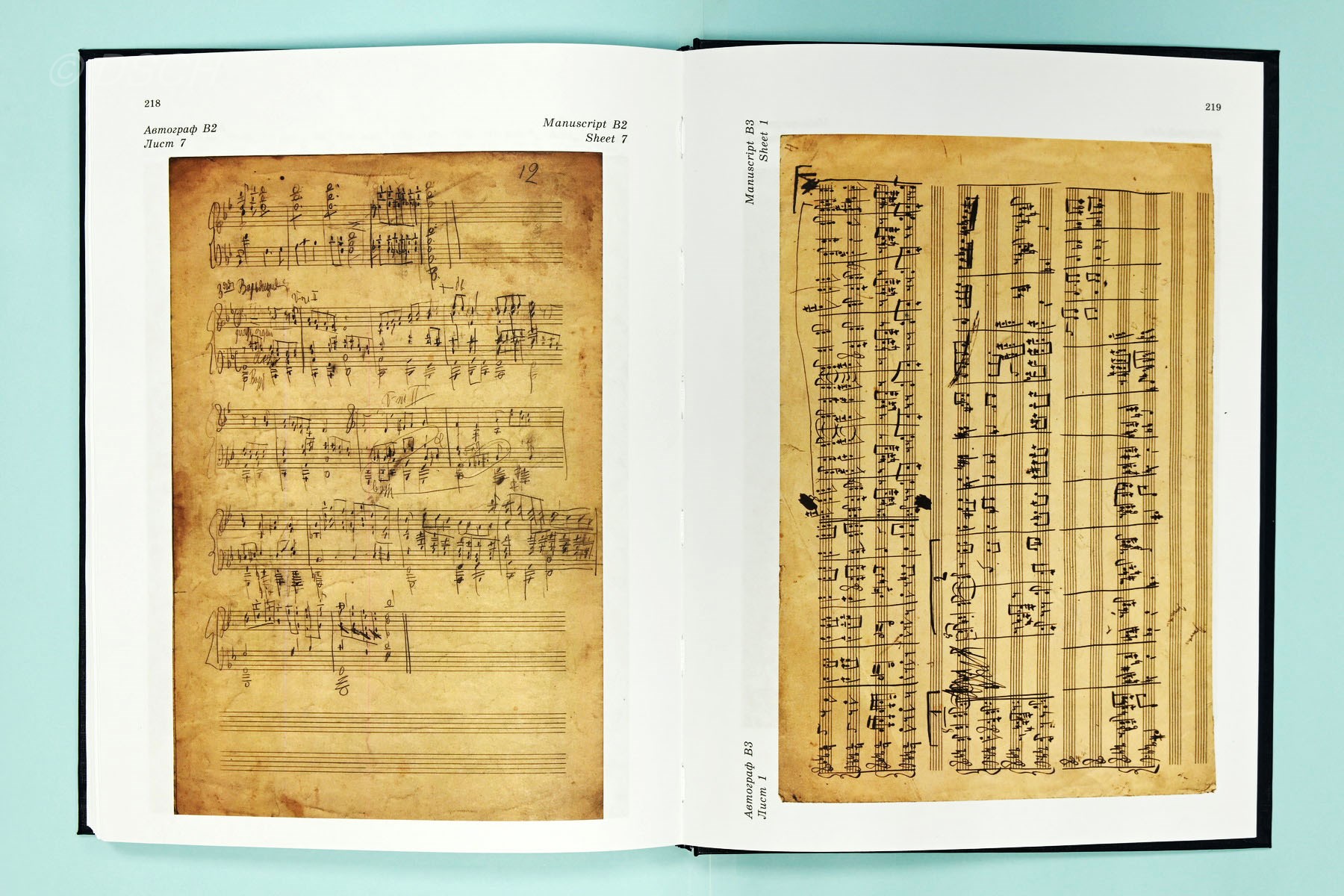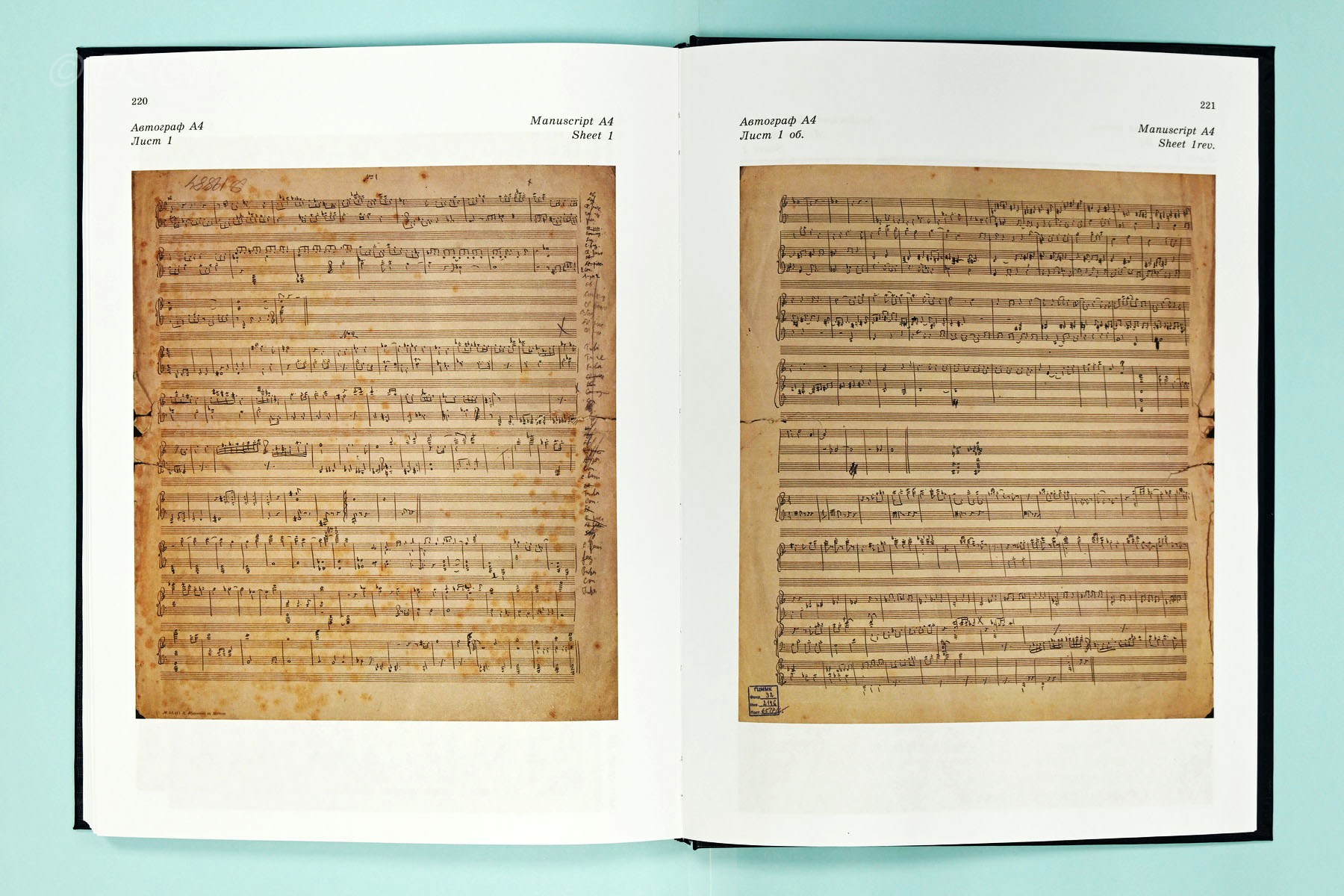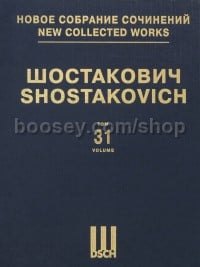Orchestral Compositions of Different Years (New Collected Works Vol.31)
Orchestral Compositions of Different Years (New Collected Works Vol.31)
* Estimated price converted from UK retail price
Click below to view music sample pages


This volume includes two Scherzos, Op. 1 and Op. 7, Theme and Variations, Op. 3, and Five Fragments, Op. 42. Although these compositions are unlike each other in terms of their musical attributes and different periods of Shostakovich’s creative work, they have something in common inasmuch as all of them are marked with two crosses in the list the composer included in a letter to Grigori Shneerson of 28 January 1941. In a letter to Dmitri Rogal-Levitsky of 22 September 1927, Shostakovich explained these marks as follows: “A cross (+) after the year means that this work has not been published because I do not consider it of high enough quality to be published, but I think it can be performed. Two crosses (++) mean that the work is not fit for publication or performance for the same reason. So you may be asking why I am including the work in my list, if it is not of high enough quality to even be performed, and why I give it an opus number? The answer is—once written, it remains forever.” The “quality” Shostakovich writes about fell into different categories: the composer used this method to mark both earlier compositions he considered “entirely unsuccessful” and mature works, on which he placed a “veto”.
This ambitious series by DSCH, the exclusive publisher of the works of Dmitri Shostakovich, when complete, will run to 150 volumes.
Based on authentic manuscripts, accompanied by commentaries in Russian and in English, each volume contains new engravings, articles relating to the history of the compositions, facsimile pages of Shostakovich's manuscripts, outlines, and rough drafts.
Divided into 15 different "series" or genres, the edition will include nearly all the original works of the composer, and his instrumentation of music by Domenico Scarlatti, Beethoven, Schubert, Schumann, Mussorgsky, Rimsky-Korsakov, Johann Strauss, Youmans, Braga, Tishchenko, and others.
25% of the New Collected Works will be made up of previously unpublished material: over 80 of his works are being published here for the first time. Many of these previously unknown works could not be published or performed during the composer's lifetime for ideological reasons.
The fifteen "series" within the edition comprise:
I: Symphonies (vols 1-30)
II: Orchestra Compositions (vols 31-37)
III: Instrumental Concertos (vols 38-49)
IV: Compositions for the Stage (vols 50-67)
V: Suites from Operas and Ballets (vols 68-72)
VI: Compositions for Choir and Orchestra (With or Without Soloists) (vols 73-83)
VII: Unaccompanied Choral Compositions/Arrangements of Russian Folksongs (vols 84-86)
VIII: Compositions for Solo Voice(S) With Orchestra (vols 87-90)
IX: Chamber Compositions for Voice and Songs (vols 91-97)
X: Chamber Instrumental Ensembles (vols 98-105)
XI: Instrumental Sonatas(vols 106-108)
XII: Piano Compositions (vols 109-115)
XIII: Incidental Music (vols 116-121)
XIV: Film Music (vols 122-145)
XV: The Works of Other Composers, Instrumentation by Shostakovich (vols 146-150)
Scherzo for Symphony Orchestra, Op. 1
Scherzo in F sharp minor (Allegro moderato-Meno mosso-Tempo I) is dedicated to Professor Maksimilian Oseyevich Steinberg. It is the first of the young composer’s works with a “real” opus number. This publication is based on the first edition (edited by Gennadi Rozhdestvensky)—D. Shostakovich, Collected Works, in 42 vols., Volume 10, Muzyka Publishers, Moscow, 1984, collated with the author’s manuscript kept in RSALA, rec. gr. 2048, inv. 1, f. 15. If necessary, the piano score from: D. Shostakovich, New Collected Works, in 150 vols., Volume 109, DSCH, Moscow, 2018 is used.
Theme and Variations for Symphony Orchestra, Op. 3
In 1921, Shostakovich began studying “Form” during his third year at the conservatory. Nikolay Sokolov taught the course. The students were supposed to not only study musical forms, but essentially learn how to write relevant examples, including variations: Shostakovich’s Theme and Variations for Orchestra, Op. 3, might have been the result of this kind of assignment. This publication is based on the first edition (edited by Gennadi Rozhdestvenskiy)—D. Shostakovich, Collected Works, in 42 vols., Volume 10, Muzyka Publishers, Moscow, 1984, collated with the author’s manuscript kept in RSALA, rec. gr. 2048, inv. 1, f. 16. If necessary, the piano score from: D. Shostakovich, New Collected Works, in 150 vols., Volume 109, DSCH, Moscow, 2018 is used.
Scherzo for Symphony Orchestra, Op. 7
Three months after finishing work on The Officer’s Scherzo his friends “hated”, Shostakovich decided to write another piece in the same genre. On 11 July 1924, he told Tatyana Glivenko about his upcoming plans: “I will have work in the Crimea, I mean compositional work. First I need to finish the Scherzo for Orchestra I have begun...” And in a letter to his mother of 17 June, he wrote: “I finished the Scherzo for Orchestra in the past two days...” The work was dedicated to Petr Borisovich Ryazanov. This publication is based on the first edition (edited by Gennadi Rozhdestvenskiy)—D. Shostakovich, Collected Works, in 42 vols., Volume 10, Muzyka Publishers, Moscow, 1984, collated with the author’s manuscript kept at RSALA, rec. gr. 2048, inv. 1, f. 19.
Five Fragments for Orchestra, Op. 42
This cycle of concise pieces (I. Moderato; II. Andante; III. Largo; IV. Moderato; V. Allegretto) was written in one day—on 9 June 1935—during the time preceding work on the Fourth Symphony, the opus number of which (43) originally figured in the author’s manuscript of Five Fragments. Statements by Shostakovich and Sollertinsky about the conceived, but still unwritten, Fourth Symphony make it possible to understand the role played by Fragments in the composition of “one of Shostakovich’s most outstanding and tragic works”. This publication is based on the first edition (edited by Gennadi Rozhdestvenskiy)—D. Shostakovich, Collected Works, in 42 vols., Volume 10, Muzyka Publishers, Moscow, 1984, collated with the author’s manuscript kept at RNMM, rec. gr. 32, f. 71 and a photocopy of the author’s manuscript with the notes by the author kept in Dmitri Shostakovich’s Archive, rec. gr. 1, section 1, f. 318.




